A Fight, A Dance, A Naked Knightley, and a Nosebleed
Thanks to John Halbrooks of “Personal Canon Formation” for inviting me to do this guest piece on Autumn de Wilde’s “Emma.” With lots of great video clips!
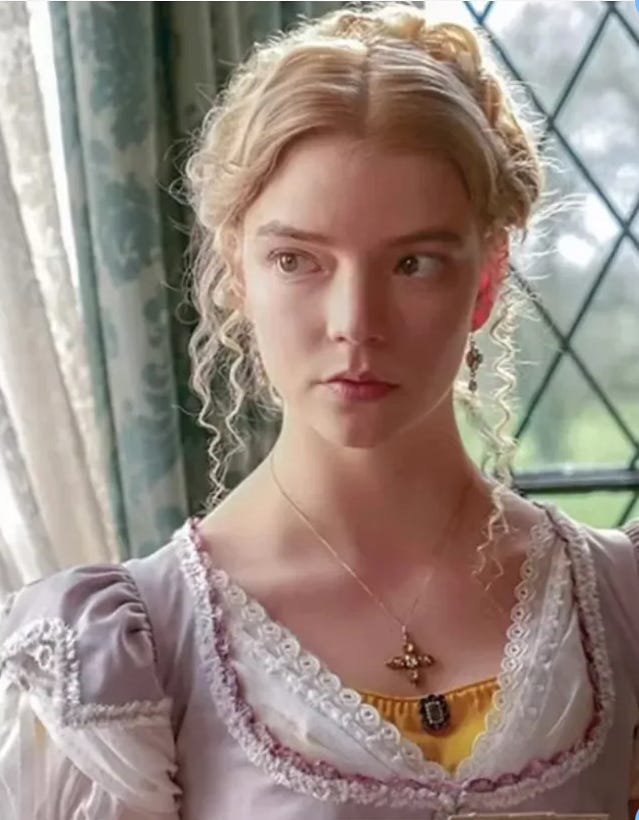
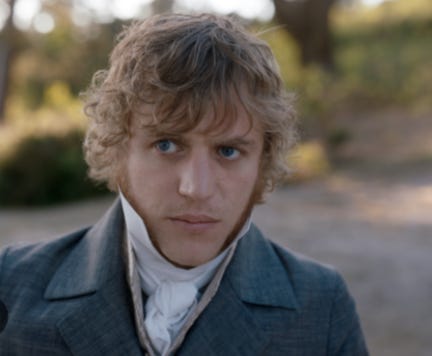
1995 was a breakthrough year for Austen adaptations. That was the year Colin Firth unbuttoned Mr. Darcy and took him for a swim. It was the year Ang Lee (director) and Emma Thompson (screenplay and character of Elinor Dashwood), abandoning the BBC tradition of sticking faithfully (and sometimes painfully) to classic texts, brought out the humor and emotion of Sense and Sensibility. And most radically, Amy Hecklerling put Emma—now named Cher (after “a great singer from the past who now does infomercials”)—in a Beverly Hills high school.
I love all these adaptations, and now, much later, I’m adding another to the list—one which, despite the 25-year-gap, owes a lot to those innovative 1995 adaptations: Autumn de Wilde’s 2020 Emma. (The period is intentional, laughs deWilde—“it’s a period piece!) Sorry If you’re a fan of Gwyneth Paltrow (1996), Kate Beckinsale (1997), or Romola Garai (2009 BBC series), but none of them made me fall in love with their Emmas (Garai might have, if she’d been less bubbly) and for me (and our master Emma guru John Halbrooks) that’s key. Unlike Austen’s more overtly sympathetic heroines, Emma Woodhouse is spoiled and class-conscious and frequently we may want to slap her. But she’s lovable—even when she’s clueless. Or perhaps it’s because she’s clueless.1
In the text Austen shows us what’s in Emma’s heart and mind by taking us inside Emma’s head, where, according to Halsbrook, we learn that:
“….unlike Austen's more stridently satirical characters, she has the capacity for empathy and for self-understanding. She is young and hopelessly inexperienced beyond the tiny world into which she was born, but she clearly has a good heart and the desire to help others, even if most of the time she has no idea how to go about it. This is why we love her—even though she is fictional, a literary construction. Such is the power of Austen’s writerly magic.”2
A movie has to do it differently. Even with the use of voice-over (which Clueless employs brilliantly) we have to learn about what’s going on inside Emma through her behavior, facial expressions and other visible reactions. And—in de Wilde’s version more than the others—through Knightley’s responses to her. Emma’s father adores her no matter what she does, Harriet idolizes her, and most of the others treat her with deference but no real understanding of her character. Only Knightley both sees (and calls out) her faults, but—in deWilde’s version—can’t conceal his affection. Even when he’ s scolding her. Perhaps especially when he’s scolding her. But because it’s a movie, you have to see it. And that’s why having an appealing, emotionally responsive Knightly is so important in a movie. In place of Emma’s inner dialogue, we need him as the gaze that assesses—and also is melted by—her.
The importance of the relationship to showing us Emma is illustrated in the following clip. Emma is gossipy, manipulative, and smugly confident of her social skills. But she’s hyper-aware of the presence of Knightley (Johnny Flynn) eavesdropping while reading a book in a chair next to Emma and Harriet (Mia Goth.) He’s scornful, but why doesn’t he get up right away and go to another room? And on her part, why does she care so much about what he thinks? Those questions are answered, subtly to begin with and more dramatically later on.
Some critics of the movie see this Emma (Anya Taylor-Joy) as too coldly calculating in her attempts to “do good” for her friend. I, however, don’t warm to those more placid, conventionally pretty Emmas (Paltrow and Beckinsale) and find Taylor-Joy, with her odd, watchful, “mean girl” beauty, as exasperatingly delicious as Knightly, apparently does. Why else would he be so irritated? And anyway—the whole point is to give her a learning arc.
This is the first movie Emma (unless you count Clueless) that realizes getting Knightley right is as important as getting Emma right. He’s her “moral compass,” as de Wilde has said. But he also has to be emotionally responsive. He can’t just be handsome in that Jeremy Northam way; he has to get the viewer in the feels.
Here’s how the pair do the iconic fight that’s in every adaptation. Knightly has just learned that Emma has manipulated Harriet into refusing Robert Martin, the earnest, hard-working farmer who wants to marry her. (Clueless has its Robert Martin character, too, in the person of skateboarder Travis Birkenstock.) Notice how Knightley stumbles and appears slightly discombobulated when he says the words “….and as a friend.” Emma will say them herself, much later, and they’ll trouble Knightley even more. (But also don’t miss the wonderful comic moment when, furiously following each other from room to room, they pass Mr. Woodhouse [Bill Nighy], perennially afraid of drafts, behind multiple screens.)
If this “battle of the sexes” (in which each side makes some pretty good arguments and which is also a ping-pong of intimacy and mutual recognition) reminds you of the screwball comedy pairings of the 1940’s it may be because, although the dialogue (screenplay by Booker Prize-winning novelist Eleanor Catton) stays pretty close to the original Austen, deWilde directs it to evoke those comedies. They also often took place among privileged couples with servants hovering around, and in them, too, argument—sometimes quite heated—was a form of love-language, even when each partner was thoroughly exasperated. From Adam’s Rib:
Tracey and Hepburn’s chemistry in Adam’s Rib is that of equals. (My students were always amazed, when I showed the film in class, just how equal they were.) And while the relationship is not overtly sexualized, we knew, from their mutual teasing and sparring—and the unwillingness of each to give ground, but amiably—that they were good together in bed. Playing a married couple (in real life, they were longtime lovers), their intimacy was unforced, casual.
Of course, it can’t be that way in Emma. But that makes it potentially much sexier—a potential that hasn’t been taken advantage of in other movie and television versions of Emma, but that is realized in de Wilde’s Emma, which has one of those scenes—you know, in which the holding of a gaze and a gloved hand around a waist is far more erotic than the naked sex that’s so conventional nowadays it’s usually pretty boring.
Johnny Flynn is without a doubt the warmest, most relatable, and sexiest Knightley yet. Before Johnny Flynn got into his trousers, the character had never projected that manly, stride-across-the-field British Eros that Colin Firth brought to Mr. Darcy in the 1995 Pride and Prejudice. Apparently, director Simon Langton was amazed (hard to believe) when Darcy’s drenched shirt created a sensation. Even today, it’s iconic:
But it wasn’t just the soaked shirt. When a reserved English gentleman, all decked out and used to experiencing the restraint of clothing (all that stuff around the neck, how can he stand it?) in his elaborate man-of-the-estate get-up sits down beside a stream and begin to unbutton his jacket, it’s like a strip tease. It’s the breaking down of the adornments of civilized man to reveal the “natural” man within. The revelation of animal magnetism inside the starched shirt. Except Firth also looks gorgeous in the starched shirt, too. The entrance on the horse and the exit, striding across the field, are erotic book-ends in their own right. The hair has to be messed up, too.
Flash forward to Johnny Flynn. This time the gentleman is getting dressed rather than undressed. And at the beginning he’s butt naked.
When asked why Johnny Flynn gets naked in her Emma, Autumn deWilde has said that Knightley’s nudity “was a way of showing the difference between Emma and Knightley at the beginning of the movie. Knightley appears to us a lot more human and fully formed.” Yes, he’s being tended by servants, and like Emma, takes his privilege for granted. But “he’s the moral compass of the story. They’re both snobs, but I wanted to show how far she needed to go.” She has to learn her humanity, access her moral center, through trial and error—a lot of error.
I get the idea, and maybe it’s the reason why deWilde had him be naked, but Knightley’s more grounded “human-ness” doesn’t really seem the essence of the scene. There’s so much “civilized” versus “natural man” coding going on in this scene: the attentions of the servants, the elaborate clothing—even more elaborate than Mr. Darcy’s—standing for both the privileges and the constraints of civilized life (for a rich man); the refusal to take a carriage, the manly striding through the massive, over-decorated rooms, and then out into the field signifying the freedom of “natural” movement and pleasure.
Emma, being a woman, doesn’t have that kind of freedom to be “natural.” Her desire to be an active, effective mover in the play of life is channeled into caring for her father, dressing up beautifully (and imaginatively, in this colorful, fashion-forward version) and (her true “vanity,” according to Knightly) engineering the love-lives of others. At which she screws up badly. But she is as human as Knightly, and although she doesn’t ever appear naked, she does have a human body—which she warms in front of the fire:
:
More importantly, Emma’s very human body insists on speaking for her feelings.
The eruption of emotion out of restraint is an Austen theme that lends itself especially well to the movies. My favorite example is a scene from the 1995 Sense and Sensibility that made me gasp the first time I saw it. In it, Emma Thompson exquisitely conveys all that Elinor Dashwood has held back until that moment. It’s a visceral expression of what Austen has conveyed about Elinor throughout the novel, and it’s why the classically comedic ending seems earned rather than hokey.
It was Thompson’s first screenplay, she spent five years drafting numerous revisions in between various acting jobs, and the studio was nervous about the fact she was not a screenwriter. (They hoped Ang Lee as director would compensate with distributors.) But like Greta Gerwig’s Little Women 3Thompson managed to be both inventive—adding scenes and details not in the original—and faithful to Austen. It’s a kind of alchemy that focuses on personality rather than exact reproduction, and in making the characters more “readable” to a modern audience, brings them to life in a way that, for me at least, is as delicately delicious as reading the novel.
Autumn deWilde’s even more “off text” way of having her heroine’s emotions speak through the body is by giving her a nosebleed when Knightley proposes.
DeWilde says that the invention was partly inspired by her own history of having nosebleeds at inconvenient times. She wanted to show, too, that Emma was “a hot mess” at this extremely romantic moment. “I’ve thought a lot about how much the body interfered with some of the most romantic moments of my life. I love the comedy of fighting your body. And a nosebleed is so exposing.”
With respect to the person who wrote the scene, I see it a little differently. The nosebleed interferes with the kiss that Knightley is about to give her, that’s true. And the scene is very funny. But I don’t see Emma so much “fighting” her body as, overpowered by emotions, relinquishing herself to it, and—like Emma Thompson’s Elinor—allowing it to call the shots. She’s not at all bothered by the stream of blood dripping from her nose or how ridiculous it makes her appear.
Ridiculous. Human. Lovable.
Originally, in fact, I was going to write this stack about Clueless. But I realized that somehow I had missed seeing de Wilde’s version when it came out—possibly I was housebound because of COVID—and after watching it, was so enchanted that I decided to write about it instead.
For more of my thoughts on Little Women (and also Gerwig’s Barbie), see my earlier posts: Greta Gerwig’s Barbie and Girl Culture and Biggest Grossing Movie Directed By a Man and




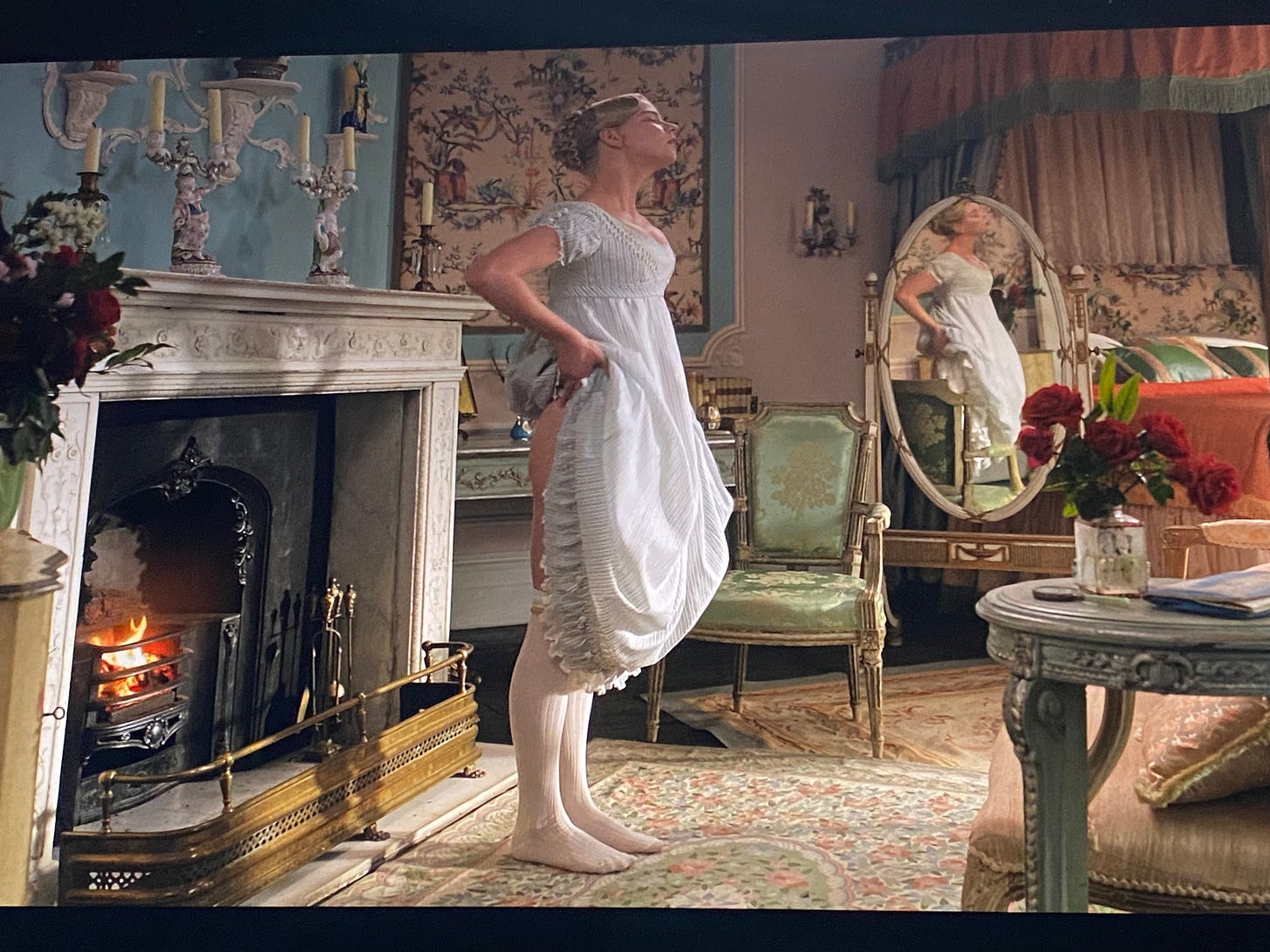
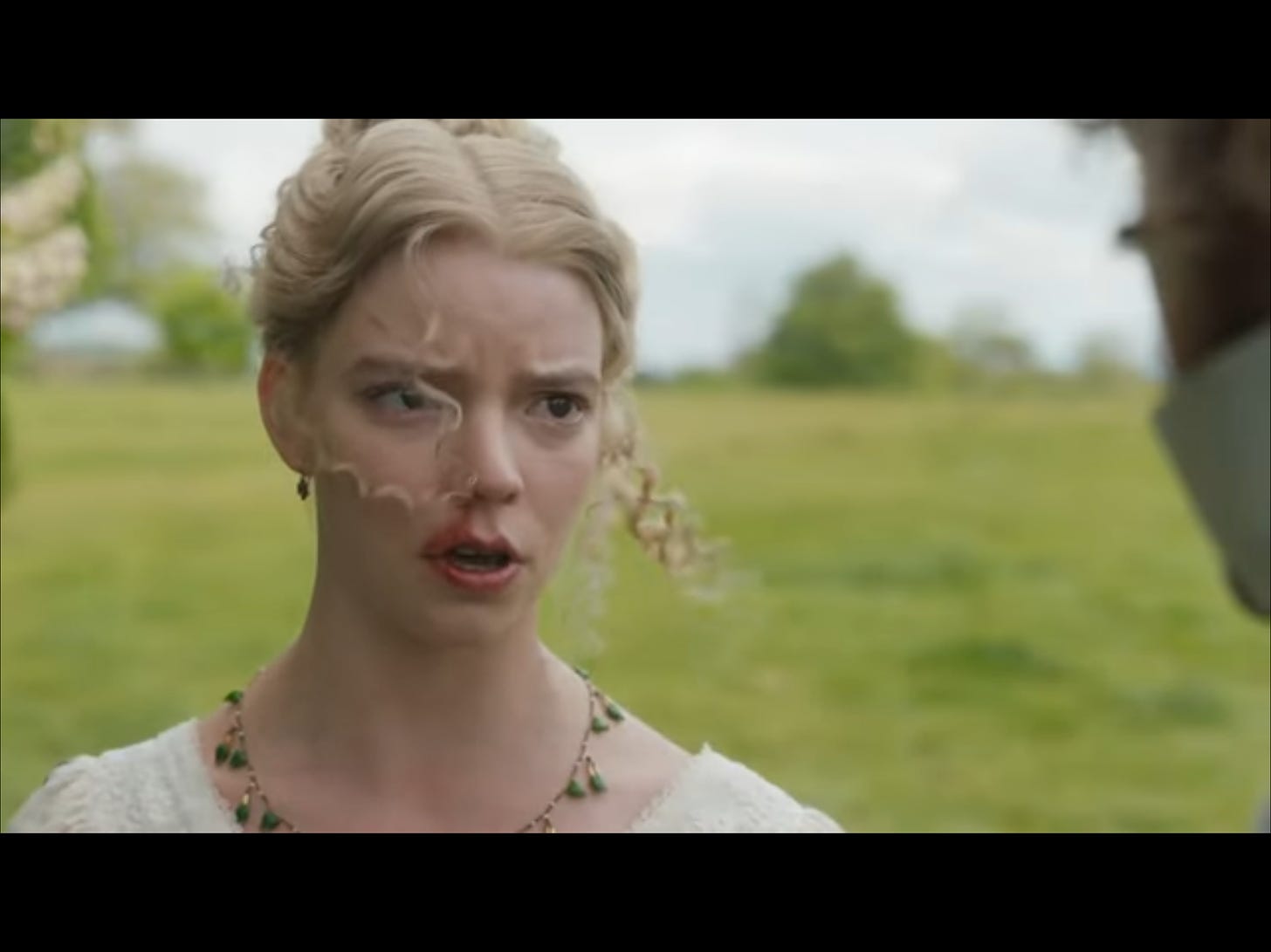

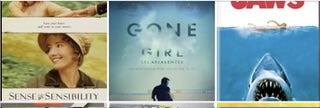
Thanks for this article.
I'm an Austen book and adaptation fan myself.
I thought Emma. was an excellent movie that made some unusual choices that, for the most part, worked very well.
Some thoughts on Emma adaptations over the years:
Both Harriet Smith and Jane Fairfax are described in the 1815 book as 'plump' and 'between being fat and thin' and are praised for their attractiveness. Yet with the exception of Toni Collette's Harriet in the 1996 movie, the characters are always cast as thin. I wonder if the 2020 Emma. would have cast plumper actresses in these roles if it was coming out in 2026, after Bridgerton Series 3 featured a curvy heroine, rather than in 2020?
All movie length adaptations of Emma struggle to do justice to the Frank Churchill/Jane Fairfax plotline because of time constraints. The best adaptation in terms of doing justice to that plotline, and to other important details in the book, is the 2009 4-hour BBC TV adaptation. However, sadly, I cannot love that adaptation. Romola Garai and Jonny Lee Miller don't work as Emma and Mr Knightley. Garai is constantly looking awkward and unconfident. Miller is regularly frowning and isn't sexy at all. It's odd because, as Edmund Bertram in the 1999 Mansfield Park, Miller makes Edmund sexier than he has any right to be! But just 10 years later, he destroys the sex appeal of Mr Knightley.
The 1996 movie has the best versions of Mr Elton, Mrs Elton and Frank Churchill. All brilliantly characterised.
The 2020 Emma. is bold and innovative. I was struck at the end of the movie with how human and embodied they had managed to make Emma and Mr Knightley, despite much of the adaptation being deliberately over the top. I thought this was a real 'win' for the movie.
I always feel bad for the Victorian lit professor. They will never touch the obsession and passion of the fans, who can skate circles around them.